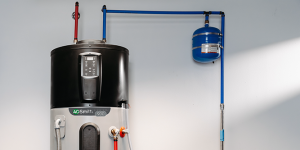The Federal Reserve has been intent on helping cool inflation. Higher living costs have been wreaking havoc on consumers for more than two years now, and a lot of people have seen their credit card debt rise and their savings shrink as a result.
To help ease inflation, the Federal Reserve opted to raise interest rates 10 times beginning in March of 2022. It then decided to pause that practice last month, giving consumers looking to borrow money some relief.
But will the Fed’s rate hike pause hurt savers? Not necessarily.
Featured offer: save money while you pay off debt with one of these top-rated balance transfer credit cards
How rising interest rates impact consumers
The Fed is not tasked with setting consumer interest rates directly. Rather, it oversees the federal funds rate, which is what banks charge each other for short-term loans.
But when the Fed raises its benchmark interest rate, lenders tend to follow suit by charging higher interest rates on consumer borrowing products like auto loans, personal loans, and home equity loans. So all told, borrowing has gotten very expensive over the past year in the wake of the Fed’s actions.
The fact that the Fed paused interest rate hikes in June means that in the very near term, the cost of borrowing may not rise so much. But that also means that savings account rates may not rise.
While rate hikes are a bad thing for consumers looking to borrow money, they’re a good thing for people with money in the bank. So for the time being, savings account rates might hold steady rather than rise.
But it’s also important to realize that the Fed’s decision to pause rate hikes isn’t necessarily bad news for savers, either. The Fed didn’t cut rates — it simply left them flat. So that shouldn’t cause banks to lower rates anytime soon.
Are more rate hikes in store, or is the Fed finally done?
It’s hard to know what the Fed will do about rate hikes when it sits down to meet later in July, or at other points later on in 2023. Some financial experts think we’re due for more rate hikes despite the progress that’s been made on fighting inflation. Others think the Fed might opt to let things be for a while and not raise rates anytime soon.
Ultimately, we’ll have to wait for the central bank to convene and make a decision. But the good news for savers is that the Fed is not expected to cut rates anytime soon, so current savings account rates should at least hold steady for a bit if they don’t rise. And given that banks are paying a fairly generous amount of interest these days, that’s hardly something to get upset over.
Of course, anyone who’s worried about rate cuts could consider locking in a certificate of deposit, or CD. That guarantees the same interest rate for a preset period of time. However, it also means potentially losing out on a higher interest rate should the Fed raise rates again in 2023. So anyone looking into this option should think about the pros and the cons.
These savings accounts are FDIC insured and could earn you 11x your bank
Many people are missing out on guaranteed returns as their money languishes in a big bank savings account earning next to no interest. Our picks of the best online savings accounts can earn you 11x the national average savings account rate. Click here to uncover the best-in-class picks that landed a spot on our shortlist of the best savings accounts for 2023.
Read the full article here














